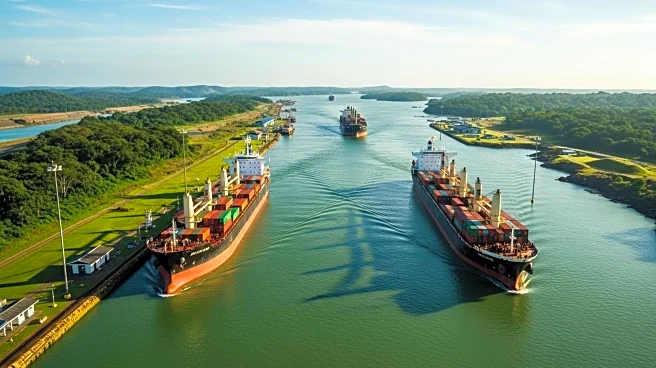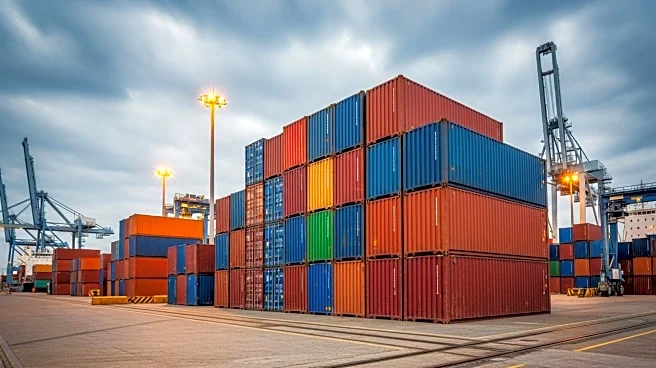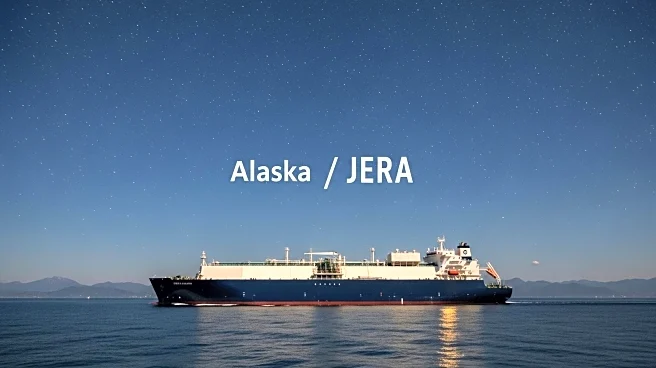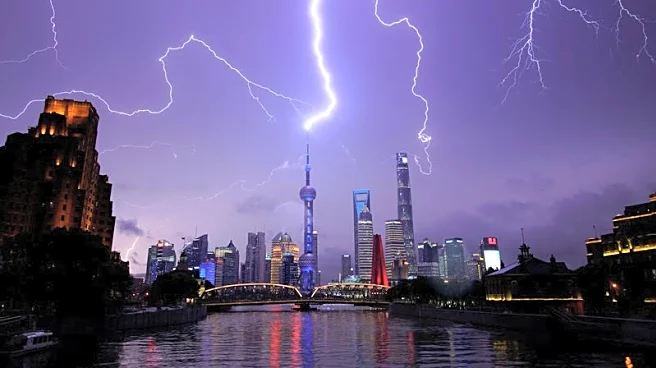What's Happening?
The Panama Canal Authority is undertaking significant infrastructure investments to address the challenges posed by severe droughts that have disrupted vessel transits. The canal, which relies heavily on rainfall, experienced a historic drought from late 2022 to 2024, leading to reduced transits and vessel weight restrictions. This has prompted the authority to explore alternative solutions, including the construction of a land bridge and a natural gas pipeline. The pipeline aims to transport liquified petroleum gas and other products from the Atlantic to the Pacific, bypassing the canal. This initiative is expected to attract more LNG transits and improve reliability for U.S. energy companies.
Why It's Important?
The Panama Canal is a critical artery for U.S. trade, with the United States being its largest user. Approximately 73% of the canal's traffic is linked to U.S. commodity exports and imports, making it vital for the U.S. economy. The recent droughts have highlighted the canal's vulnerability to climate change, affecting $270 billion in annual cargo. The proposed infrastructure projects, including the land bridge and pipeline, aim to mitigate these risks and ensure the canal's continued role in global trade. This development is particularly significant for U.S. energy companies, which stand to benefit from more reliable and efficient transport routes.
What's Next?
The Panama Canal Authority has initiated the pre-qualification and selection process for concessionaires to build the proposed infrastructure. The projects are expected to enhance the canal's capacity to handle high-value energy products destined for Asia. As the canal authority moves forward with these plans, U.S. energy companies are likely to closely monitor developments, given the potential for improved transit times and reliability. The success of these initiatives could also influence future investments in similar infrastructure projects aimed at mitigating climate-related disruptions.













